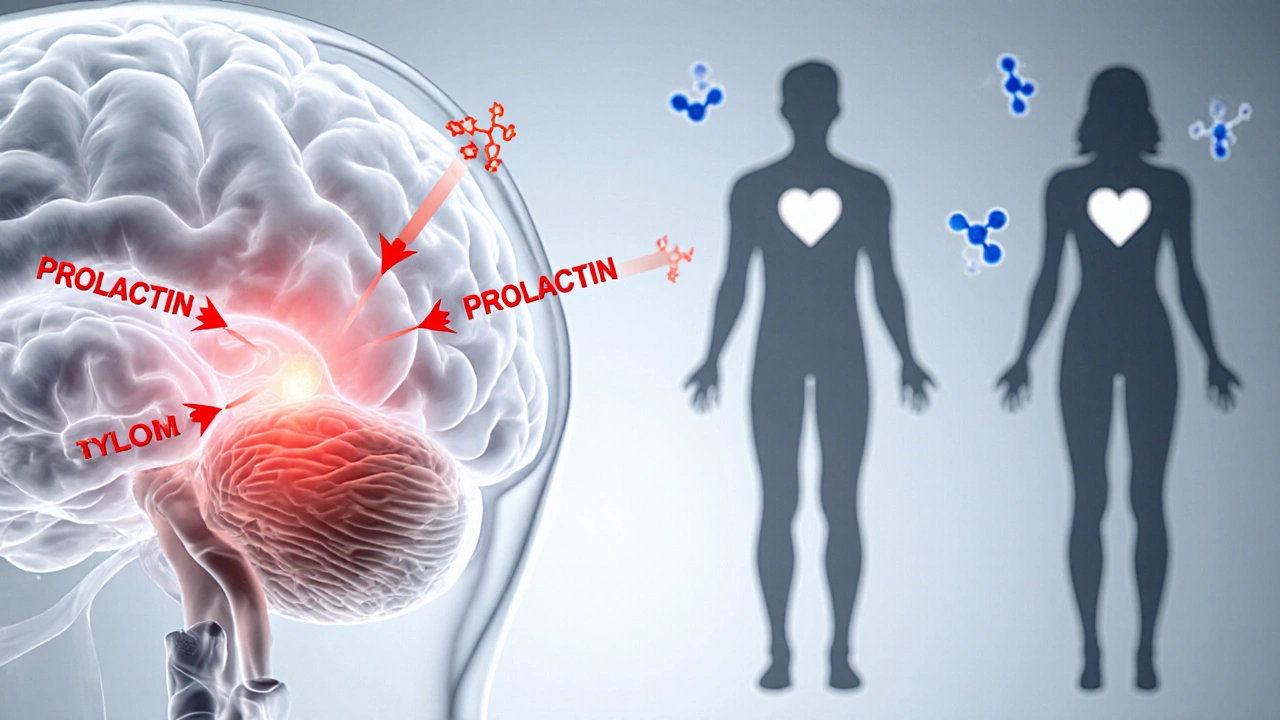Hyperprolactinaemia: What It Is, Why It Happens, and How to Manage It
When dealing with hyperprolactinaemia, a condition where the hormone prolactin is abnormally high in the bloodstream. Also known as high prolactin level, it can disrupt menstrual cycles, cause unwanted milk production, and affect sexual function. This condition comes up a lot in hormone‑related checkups, so understanding the pieces that fit together helps you spot it early and act fast.
Key Players Behind Elevated Prolactin
The hormone at the heart of the issue is prolactin, a protein made by the pituitary gland that primarily stimulates milk production after childbirth. When something pushes prolactin beyond its normal range, you get hyperprolactinaemia. One major driver is a pituitary adenoma, a benign tumor that can press on the pituitary and force it to release extra prolactin. Even if the tumor is tiny, it can tip the hormone balance and trigger symptoms like missed periods or unexpected breast discharge.
Not every case comes from a tumor. Certain medications act like hidden levers on the prolactin pump. Antipsychotics, anti‑nausea drugs, and some blood pressure medicines can block dopamine—a chemical that usually keeps prolactin in check. When dopamine is blocked, prolactin shoots up, leading to what doctors call medication‑induced hyperprolactinaemia, elevated prolactin levels caused by drugs rather than a disease process. Knowing which pill you take might be the first clue.
On the flip side, when the cause is a tumor or a drug, the body often responds with a set of predictable signals. Women may notice irregular periods, infertility, or painless milk flow from both breasts—known as galactorrhea. Men can experience reduced libido, erectile trouble, or even breast enlargement. These signs point back to the same hormone imbalance, creating a clear link between cause and effect.
To bring prolactin back down, most doctors start with dopamine agonists, medications like cabergoline or bromocriptine that mimic dopamine and tell the pituitary to calm its prolactin output. These drugs often shrink small adenomas and reverse hormone‑related symptoms without surgery. If a large tumor is the culprit, surgery or radiation may be needed, but even then dopamine agonists usually stay part of the long‑term plan.
Lifestyle tweaks can also support treatment. Managing stress, getting enough sleep, and avoiding alcohol can prevent dopamine fluctuations that might worsen prolactin spikes. For those on offending medications, a doctor might switch to an alternative that doesn’t interfere with dopamine, or add a low‑dose dopamine agonist to keep the hormone in check.
Understanding how prolactin, pituitary adenomas, drug side effects, and dopamine agonists all interact gives you a solid roadmap. Whether you’re a patient trying to decode weird symptoms or a caregiver looking for clear steps, the connections outlined here set the stage for smarter decisions.
Below you’ll find a curated set of articles that break down each piece in more detail—from how to interpret lab results to choosing the right medication and navigating surgical options. Dive in to get the practical tips you need to manage hyperprolactinaemia effectively.
How Hyperprolactinaemia Impacts Libido and Sexual Function
Explore how high prolactin levels affect libido and sexual function, learn to diagnose the issue, and discover effective treatments and lifestyle tips for recovery.

